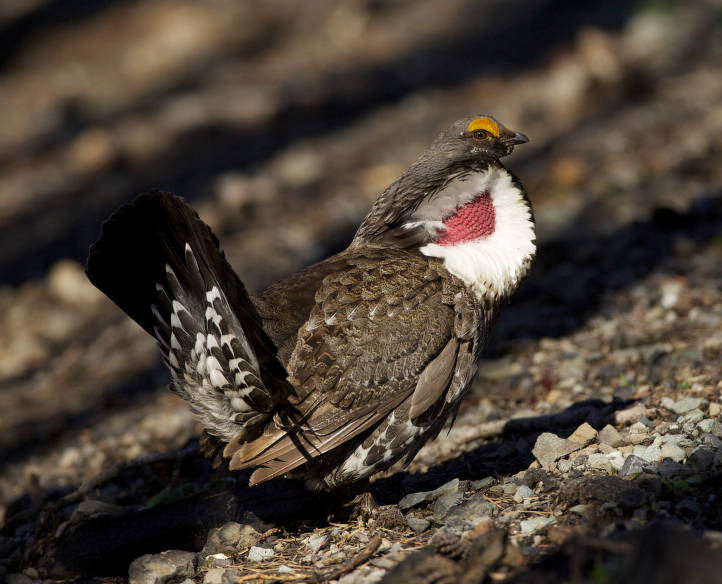When the weather outside is frightful...
- osstewardship
- Dec 15, 2023
- 2 min read
The weather outside might be frightful, but for many animals it is actually quite delightful! Lots of our local wildlife are perfectly happy outside in the winter thanks to all of their cold weather adaptations.

We've mentioned this before on the blog, but grouse, who are a ground-dwelling gamebird, will actually grow little combs on their feet in the winter to make their feet larger and more snow-shoe like. They also grow extra down feathers over their nostrils to help warm the air they breathe. At night, grouse will dive down and cannonball themselves into soft piles of snow to create little snow caves in which to roost, taking advantage of snow's excellent insulating power.
Many songbirds, as well as lots of small mammals such as voles and moles, snuggle together underground to share and conserve body heat. Voles also rarely come to the surface during the winter and just use a network of snow tunnels to get around, again using the insulation of snow to their benefit. Often times, small mammals can stay so comfortable during the winter that they will actually reproduce! (Much to the chagrin of your garden...)

Most birds have specialised circulations systems in their legs and feet that put arteries and veins really close together. Arteries bring blood from our heart towards our extremitites and and veins bring it back This means the cold blood in the leg veins will pass by the warm leg arteries before it returns to the heart. The cold blood gets warmed by those leg arteries as it passes by so the duck doesn't ever get cold blood coming back into its torso, which helps keep its core warm! This useful adaptation is called countercurrent heat exchange.
(For a visual explanation of countercurrent heat exchange, check out this video!)
River otters have no problem frolicking around in chilly temperatures, even after an icy swim! Their fur is made of two layers - a long outer layer with scaly hollow hairs called guard hairs and a soft insulating undercoat. The outer guard hairs link together to create a protective barrier to the insulating underfur layer below. This fur is extremely dense, with over 350,000 hairs per square inch! (By comparison, the average pet cat has just 60,000 hairs per square inch) This density of fur traps lots of warm air close to their body. Otter fur is also very oily which means it repels water as they swim so they don't get soaked.



Comentários